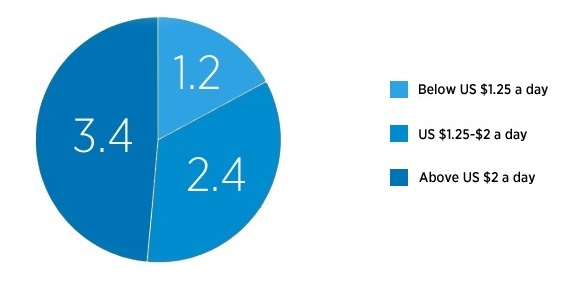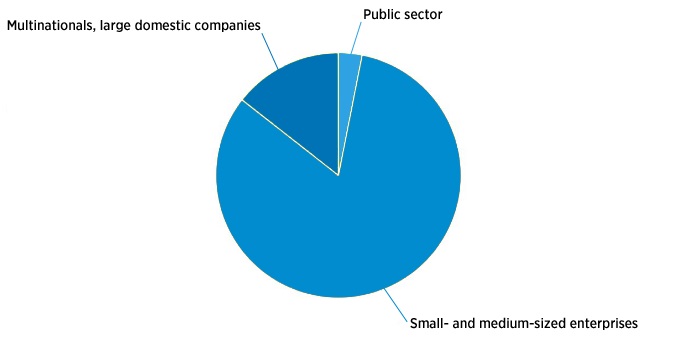Hand in Hand fights poverty with grassroots entrepreneurship. Long-term, our goal is to help eradicate poverty through creating opportunities for the rural population.
We rely heavily on the efforts of Enterprise Development Facilitators (EDFs) who are ward-based which allow them to be in constant touch with the communities. The EDFs mobilize, coordinate and monitor the Self Help Groups within areas of jurisdiction. EDFs act as the point of contact for the group members and this improves the visibility of the organization on the ground. This has drastically improved the impact of the organization in the community as the EDFs play an oversight and monitoring role over the groups. In simple terms we rooted within the communities we operate in.
24,381 individual jobs created from October 2015 to June 2024. Our entrepreneurs make their own success, breaking the cycle of dependency.
90,000 lives improved between October 2015 and June 2024. Every business we help create benefits an average of five family members – young, old and everywhere in between
18,156 individual enterprises created and enhanced. Our entrepreneurs farm crops, manufacture goods, run shops and so much more. Members are linked to markets through field days, market fairs and exhibitions. Members also access micro-loans to enhance their businesses.
It sounds obvious, but the idea of fighting poverty with jobs – an equation so basic that most of us take it for granted in our own lives – has only recently taken center stage in development. Hand in Hand Zimbabwe equips our members with the skills and knowledge they need to make their own success, with some notable benefits.
For these reasons and others, all backed by solid research, jobs are finally catching on. In November 2012, UN Secretary General Ban Ki-moon released a statement calling on African leaders to “work together to foster job creation and entrepreneurship throughout the continent as critical ways to build a more prosperous and sustainable future for all.” A year later, The World Bank published a landmark report – aptly titled ‘Jobs’ – noting the importance of employment. “Jobs are the cornerstone of economic and social development,” it said. “Indeed, development happens through jobs.” And in 2014, UK International Development Secretary Justine Greening said, “economic development is absolutely and without question, the only way we can ultimately defeat poverty.”

Fifteen years after the world’s governments, civil society organizations and citizens rallied around the UN Millennium Development Goals, some 1.2 billion people continue to live on less less than US $1.25 a day. Concentrated overwhelmingly in sub-Saharan Africa and central Asia, this ‘bottom billion’ remains largely untouched by the global project to eradicate poverty.
An average of five family members benefit from every job we create – particularly for women, who make up over 90 percent of Hand in Hand entrepreneurs. Conservatively estimating an average family size of four, then, some 250 million jobs are required to lift the bottom billion out of extreme poverty.
Across the developing world, informal small- and medium-sized enterprises dominate the economic landscape. In India, for example, home to Hand in Hand’s largest operation, informal jobs in agriculture, manufacturing and more account for 90 percent of GDP. Clearly, the public and formal private sectors cannot and will not provide the 250 million jobs required to lift the bottom billion out of poverty.

But for all its size and dynamism, the informal sector cannot overcome poverty on its own. A lack of capital and business knowledge, along with barriers to accessing microcredit and crucial larger markets, keep millions from realizing their potential. That’s where Hand in Hand comes in, providing would-be entrepreneurs with the skills and training they need to work their own way out of poverty – without fuelling the cycle of dependency.
In India, where our job creation model was first tried and tested, jobs cost as little as US $38 each to produce. In Afghanistan – our most challenging context, hampered by security concerns and difficult geography – that figure is approximately US $328. According to the Institute for the Study of Labor, other NGOs spend up to US $400 per person on training alone.